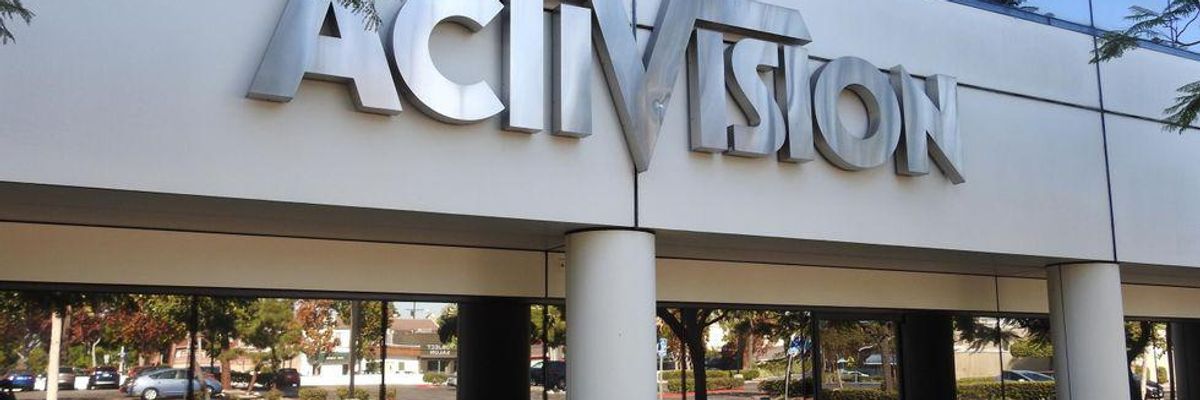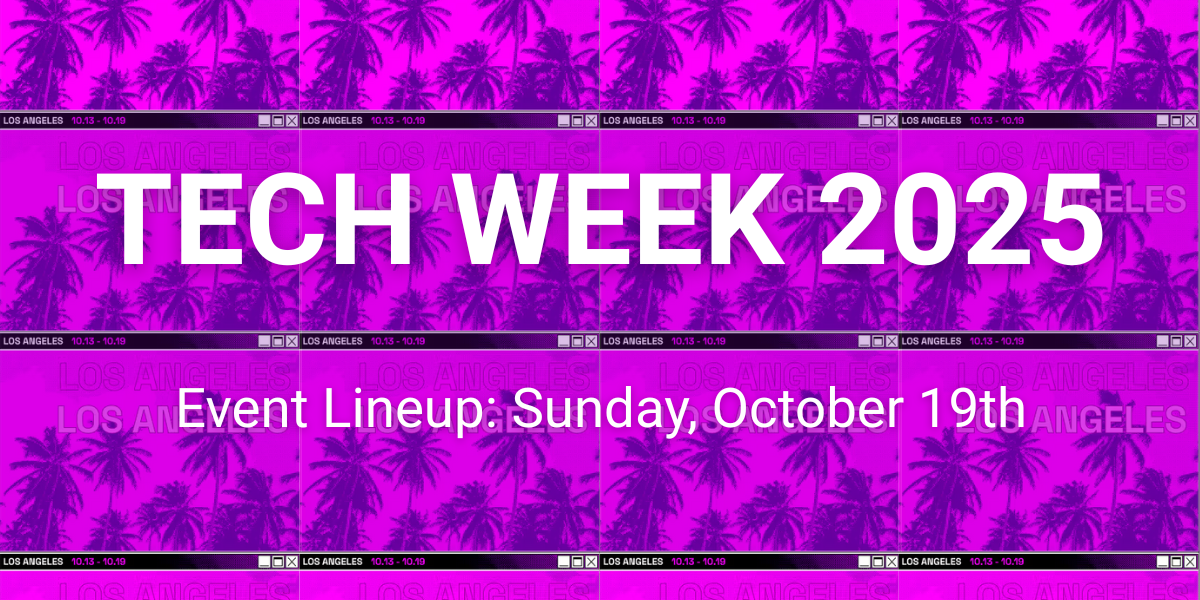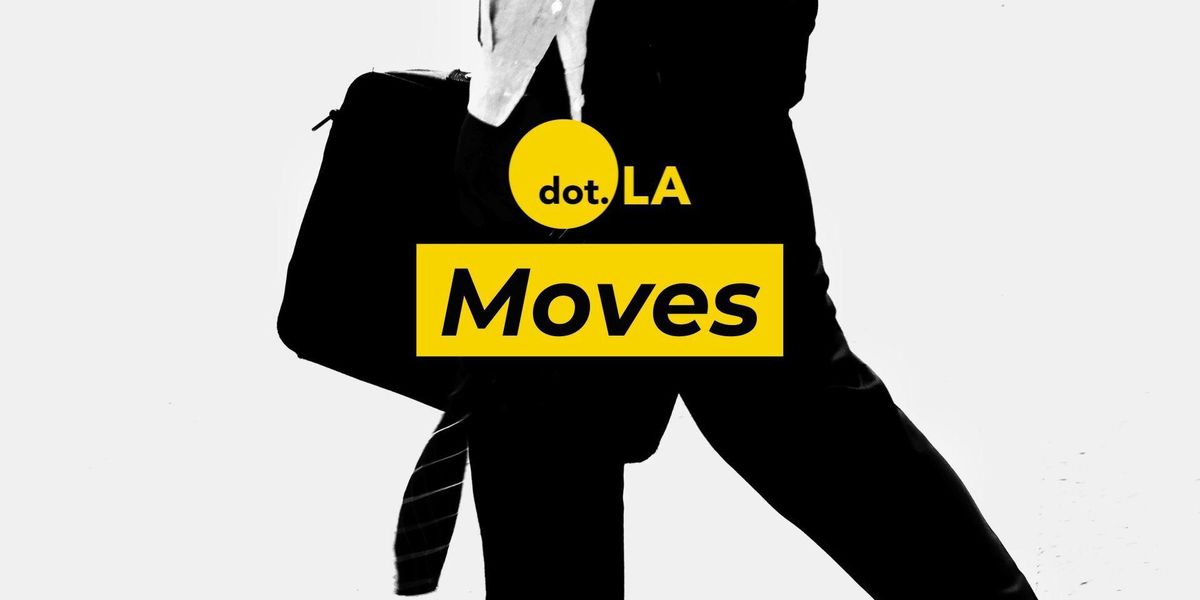

Get in the KNOW
on LA Startups & Tech
X
Image courtesy of Shutterstock
Read the Discrimination Memo Activision Workers Sent to Management
Samson Amore
Samson Amore is a reporter for dot.LA. He holds a degree in journalism from Emerson College. Send tips or pitches to samsonamore@dot.la and find him on Twitter @Samsonamore.
In the wake of a historic, successful unionization drive at Activision Blizzard subsidiary Raven Software, Activision employees in Los Angeles are now ramping up pressure on the video game developer—sending a lengthy memo to management on Tuesday laying out demands on workplace issues ranging from the company’s handling of sexual harassment cases to trans workers’ rights.
The four-page letter, obtained by dot.LA, was sent by members of ABetterABK, a coalition of Activision Blizzard workers that began mobilizing last year amid the high-profile workplace misconduct controversies that have arisen at the Santa Monica-based company. ABetterABK sent the memo one day after employees at Activision’s Wisconsin-based Raven Software studio voted in favor of certifying their Game Workers Alliance union—the first labor union at a major video game publisher in the U.S.
Following that labor victory, ABetterABK, which is not a union, has now taken the initiative and laid out a series of demands to Activision via a newly formed Worker Committee Against Sex & Gender Discrimination. Those demands include ending the practice of mandatory arbitration for discrimination and sexual harassment cases at Activision—which would let accusers take their alleged abusers, as well as the company itself, to court—and requiring that an outside, independent third-party investigate all such claims.
The memo also requests 12 weeks of paid parental leave for all new parents, during which they would receive 100% of their normal compensation and cannot lose their position. It also notes Activision’s “history of discrimination towards employees who lactate,” and calls for workplace practices and facilities that protect and support breastfeeding parents, such as private feeding rooms and breastmilk storage equipment.
There is also a section addressing Activision’s treatment of transgender employees. The memo demands support for trans workers “pre, during and post-transition,” as well as the creation of a “trans network” supporting trans employees at Activision and an “advisory committee of support for [human resources], recruiting and employees at large” regarding trans issues in the workplace.
ABetterABK is also demanding that Activision institute stricter enforcement of its anti-harassment policy for gamers and content creators, who would be subject to bans for violating the policy.
“We believe it is imperative that workers have a voice in Activision Blizzard’s anti-discrimination policies—without that, the company’s culture of harassment and abuse will continue to go unchecked,” ABetterABK member Emily Knief, who works as a senior motion graphic designer at Activision, said in a statement. “We hope to have a productive conversation with leadership where they acknowledge these growing concerns and enact the demands brought forth by the committee.”
Sources told dot.LA that ABetterABK sent its letter Tuesday to Activision CEO Bobby Kotick, chief people officer Julie Hodges and chief diversity, equity and inclusion officer Kristen Hines, who recently joined the company in April.
“We appreciate that these employees want to join with us to further build a better Activision Blizzard and continue the progress we have already made,” an Activision spokesperson said in a statement Tuesday. “We have, for example, already upgraded our lactation facilities, waived arbitration, hired new DEI and EEO leaders, and collaborated with employees to make our policies and processes more Trans inclusive, just to name a few issues the letter raises. We thank these employees, and will continue to work with all of our employees on our journey to be a better Company.”
Heightened tensions between management and employees at Activision come as the game developer looks to finalize its $69 billion sale to Microsoft. While the Seattle tech giant has said that it won’t stand in the way of union efforts at Activision, the gaming company refused to voluntarily recognize the Raven Software union, which set the table for Monday’s vote.
“We respect and believe in the right of all employees to decide whether or not to support or vote for a union,” Activision spokesperson Talia Ron told dot.LA on Monday, in the wake of the Game Workers Alliance’s successful union certification vote. “We believe that an important decision that will impact the entire Raven Software studio of roughly 350 people should not be made by 19 Raven employees.”
Labor organizers working with the Raven employees told dot.LA earlier this year that they hope to expand unionization efforts across the entire company—though there’s no clear indication yet that organizers at ABetterABK or other Activision worker groups are seeking to unionize.
Read the ABetterABK letter to Activision management in its entirety below:
From Your Site Articles
- Activision Asks Court to Dismiss Calif Discrimination Suit - dot.LA ›
- Everything You Need to Know About the Activision Walkout - dot.LA ›
- The Lawsuits Keep Coming for Activision Blizzard - dot.LA ›
- Activision Blizzard Workers Win Union Vote - dot.LA ›
Related Articles Around the Web
Samson Amore
Samson Amore is a reporter for dot.LA. He holds a degree in journalism from Emerson College. Send tips or pitches to samsonamore@dot.la and find him on Twitter @Samsonamore.
https://twitter.com/samsonamore
samsonamore@dot.la
Here's the Sunday, October 19th lineup for LA Tech Week 2025, organized by location so you can easily explore events that fit your goals and schedule. Dive in and see what’s happening near you!
ARTS DISTRICT
3:00 PM
- Spinovation - The Afterparty: See Details Here
Black Women Spin, Dope Candi
BEL AIR
3:00 PM – 7:00 PM
- Pickleball Networking: Investor & Founder Event: See Details Here
Blueberries.
BURBANK
6:30 PM – 9:30 PM
- Tech Comedy show: See Details Here
Cat Ce Comedy
CULVER CITY
9:00 AM – 5:00 PM
- Coworking @ Intersections LA: See Details Here
Intersections LA, Node CRM
4:30 PM – 7:30 PM
- Build.: See Details Here
Bosmos, Inc.
INGLEWOOD
10:00 AM – 2:00 PM
- Spinovation: The Future Is Femme, The Future is Frequency: See Details Here
Sonder Impact, Black Women Spin, Sip & Sonder
KOREATOWN
12:00 PM – 3:00 PM
- IMPACT TECH: See Details Here
Biotune Wellness, Hakawati, Astralab LA
MARINA DEL REY
12:00 PM
- Sunday Tech Brunch
Sawubona
MID CITY
9:00 AM – 11:00 AM
- Women in Cleantech Hike and Network: See Details Here
Women in Cleantech and Sustainability
SANTA MONICA
9:00 AM
- From Farm to Future: A Breakfast on Distribution: See Details Here
Frootful
10:00 AM
- SMART FASHION WEEK / LA: See Details Here
Metaverse Fashion Council
3:45 PM
- [AI x Experience Economy ]: See Details Here
Goodpass
4:00 PM – 7:30 PM
- OFF THE HOOK Santa Monica Seafood Festival: See Details Here
Spin PR Group, City of Santa Monica, Tech St.
6:00 PM
- Sunday Tech Wine Down: See Details Here
Los Angeles Fun Events
7:00 PM
- Pritam: A Musical Legend - Live in Concert: See Details Here
American South Asian Network
7:00 PM
- Building AI workflow editor in React with Workflow Builder SDK: See Details Here
Workflow Builder
7:00 PM
- Hack Comedy: An AI Comedy Show: See Details Here
Hack Comedy, Jesterlabs
8:00 PM
- Unlock Apple's Corporate Advantage for your Startup!: See Details Here
iStore by St. Moritz
TOPANGA CANYON
3:00 PM
- Dreamore Hike and Picnic: LA Tech Week: *Invite Only*
Dreamore
VENICE
10:00 AM – 12:00 PM
- Coffee, Walk, and Schmooze: See Details Here
JFE (Jews For Entrepreneurship) Network
VIRTUAL (LA)
10:00 AM
- Level Up with LinkedIn: A Student’s Guide to Networking & Opportunities (Virtual Event): See Details Here
FIMAC
10:00 AM
- 42Ville: Humanity's Mental Theme Parks: See Details Here
Office for Humanity
WEST ADAMS
1:00 PM – 3:00 PM
- CyberTales at Lore: Cyber Safety for Everyone: See Details Here
Genfinity Cyber
For updates or more event information, visit the official Tech Week calendar.
Enjoy LA Tech Week 2025!
Read moreShow less
LA Tech ‘Moves’: MeWe Taps Apple Co-founder, Aspiration Swipes Tesla Director
12:00 PM | August 05, 2022
Photo by James Opas | Modified by Joshua Letona
“Moves,” our roundup of job changes in L.A. tech, is presented by Interchange.LA, dot.LA's recruiting and career platform connecting Southern California's most exciting companies with top tech talent. Create a free Interchange.LA profile here—and if you're looking for ways to supercharge your recruiting efforts, find out more about Interchange.LA's white-glove recruiting service by emailing Sharmineh O’Farrill Lewis (sharmineh@dot.la). Please send job changes and personnel moves to moves@dot.la.
***
Aspiration, a sustainable financial services company, appointed former Tesla director Tim Newell as its first chief innovation officer. Prior to leading teams at Tesla, Newell also worked under the Clinton Administration as a deputy director for policy in the White House office of science and technology.
All-electric vehicle manufacturing company Phoenix Motorcars hired industry veterans Lewis Liu as senior vice president of program management office and business development. Phoenix also hired Mark Hastings as senior vice president of corporate development and strategy and head of investor relations.
Counterpart, a management liability platform, welcomed Claudette Kellner as insurance product lead and Eric Marler as head of claims. Kellner served at Berkley Management Protection as vice president, while Marler previously served as an assistant vice president at the Hanover Insurance Group.
Legal tech and eDiscovery veteran Mark Wentworth joined compliance software company X1 as external vice president of sales and business development.
Sameday Health, a testing and healthcare provider, named Sarah Thomas as general counsel. Thomas previously served at digital health company Favor.
MeWe, an ad-free and privacy-first social network, tapped the co-founder of Apple Steve Wozniak to its advisory board, and co-founder of Harvard Connection Divya Narendra to its board of directors.
Internet marketplace Ad.net, welcomed former Interpublic CEO David Bell to its board of directors.
Science and technology company GATC Health, appointed addiction specialist Jayson A. Hymes as a new advisory board member.
AltaSea, a non-profit organization that aims to accelerate scientific collaboration, added South Bay philanthropist Melanie Lundquist to its board of trustees.
Correction: An earlier version stated Divya Narendra was added to MeWe's advisory board.
From Your Site Articles
Related Articles Around the Web
Read moreShow less
Decerry Donato
Decerry Donato is a reporter at dot.LA. Prior to that, she was an editorial fellow at the company. Decerry received her bachelor's degree in literary journalism from the University of California, Irvine. She continues to write stories to inform the community about issues or events that take place in the L.A. area. On the weekends, she can be found hiking in the Angeles National forest or sifting through racks at your local thrift store.
RELATEDTRENDING
LA TECH JOBS


